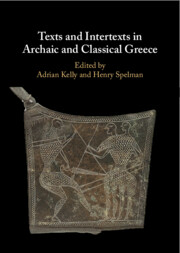Book contents
- Texts and Intertexts in Archaic and Classical Greece
- Texts and Intertexts in Archaic and Classical Greece
- Copyright page
- Contents
- Illustrations
- Tables
- Acknowledgements
- Contributors
- Abbreviations
- Introduction
- Part I Early Intertextuality
- Part II Lyric and Epic
- Part III Drama
- Part IV Conceptual Contexts
- Bibliography
- Index Locorum
- Index Rerum
- References
Bibliography
Published online by Cambridge University Press: 14 November 2024
- Texts and Intertexts in Archaic and Classical Greece
- Texts and Intertexts in Archaic and Classical Greece
- Copyright page
- Contents
- Illustrations
- Tables
- Acknowledgements
- Contributors
- Abbreviations
- Introduction
- Part I Early Intertextuality
- Part II Lyric and Epic
- Part III Drama
- Part IV Conceptual Contexts
- Bibliography
- Index Locorum
- Index Rerum
- References
- Type
- Chapter
- Information
- Texts and Intertexts in Archaic and Classical Greece , pp. 301 - 336Publisher: Cambridge University PressPrint publication year: 2024

